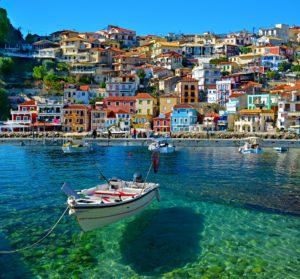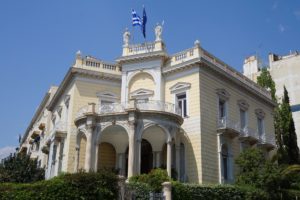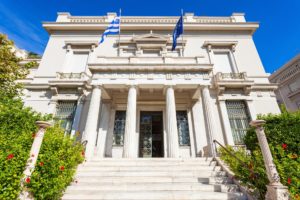At the foot of Mount Parnassos, within a “nest” formed by the twin rocks of the Phaedriades, lies the ancient sanctuary of Delphi, home of the most famous oracle of ancient Greece. Delphi was then regarded as the center of the world!
But even if the ancient Greeks hadn’t chosen Delphi (from delphys, meaning womb) as their “navel of the Earth” and built the Sanctuary of Apollo here, someone else would have thought of making this eagle’s nest town a tourist attraction. Its cliff-side location is spectacular and, despite its overt commercialism and the constant passage of tour buses through the modern village, it still gives off a distinctive vibe. UNESCO has also recognized it as a World Heritage Site.
History and mythology
According to mythology, it is here that Zeus’ two eagles, sent out to find the navel of the world, from the ends of the universe, crossed paths. Set within a most spectacular landscape, the sanctuary of Delphi was for many centuries the cultural and religious center as well as the symbol of unity for the ancient Hellenic World.
The history of Delphi starts in prehistory and the myths of the ancient Greeks. At first, the site was sacred to Mother Earth and was guarded by the terrible serpent Python that was later killed by Apollo. Apollo’s sanctuary was built here by Cretans that came at Kirrha, the port of Delphi. They were accompanied by the god in the form of a dolphin. This myth survived in plays which were presented during the various Delphic Festivals. Such festivals were the Septerion, the Delphinia, the Thargelia, the Theophania and the famous Pythia, which celebrated the death of Python and comprised athletic and musical competitions.
The Delphic oracle which was regarded as the most trustworthy was at its peak between the sixth and fourth centuries BC. Oracles were delivered by Pythia, the priestess, and interpreted by the priests of Apollo. Ordinary individuals, rulers and cities alike consulted the oracle, expressing their gratitude with great gifts and spreading its fame around the world.
The temple survived until AD 390. The Roman emperor Theodosius I silenced the oracle by destroying the temple and most of the statues and works of art in the name of Christianity. Zealous Christians destroyed the site in an attempt to remove all traces leading back to Paganism.
Archaeological research in Delphi began by Germans in 1860. In 1891, the Greek government granted permission to the French School at Athens for long-term excavations on the site. Kastri, the village that had grown over the ancient ruins was removed to allow the so-called “Great Excavation” to take place. The Great Excavation uncovered spectacular remains. About 3000 inscriptions of great importance for our knowledge of public life in ancient Greece were included in the findings.
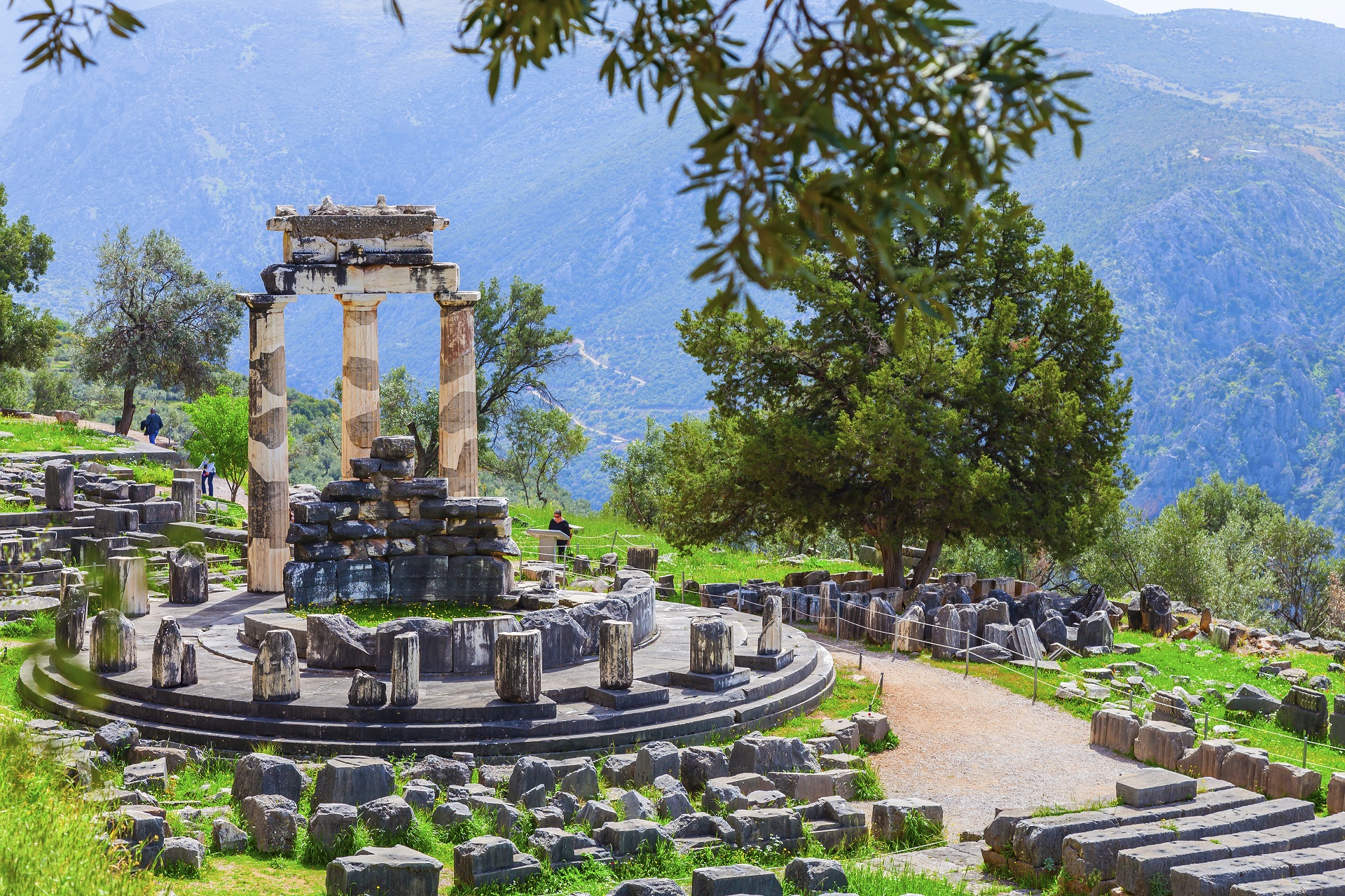
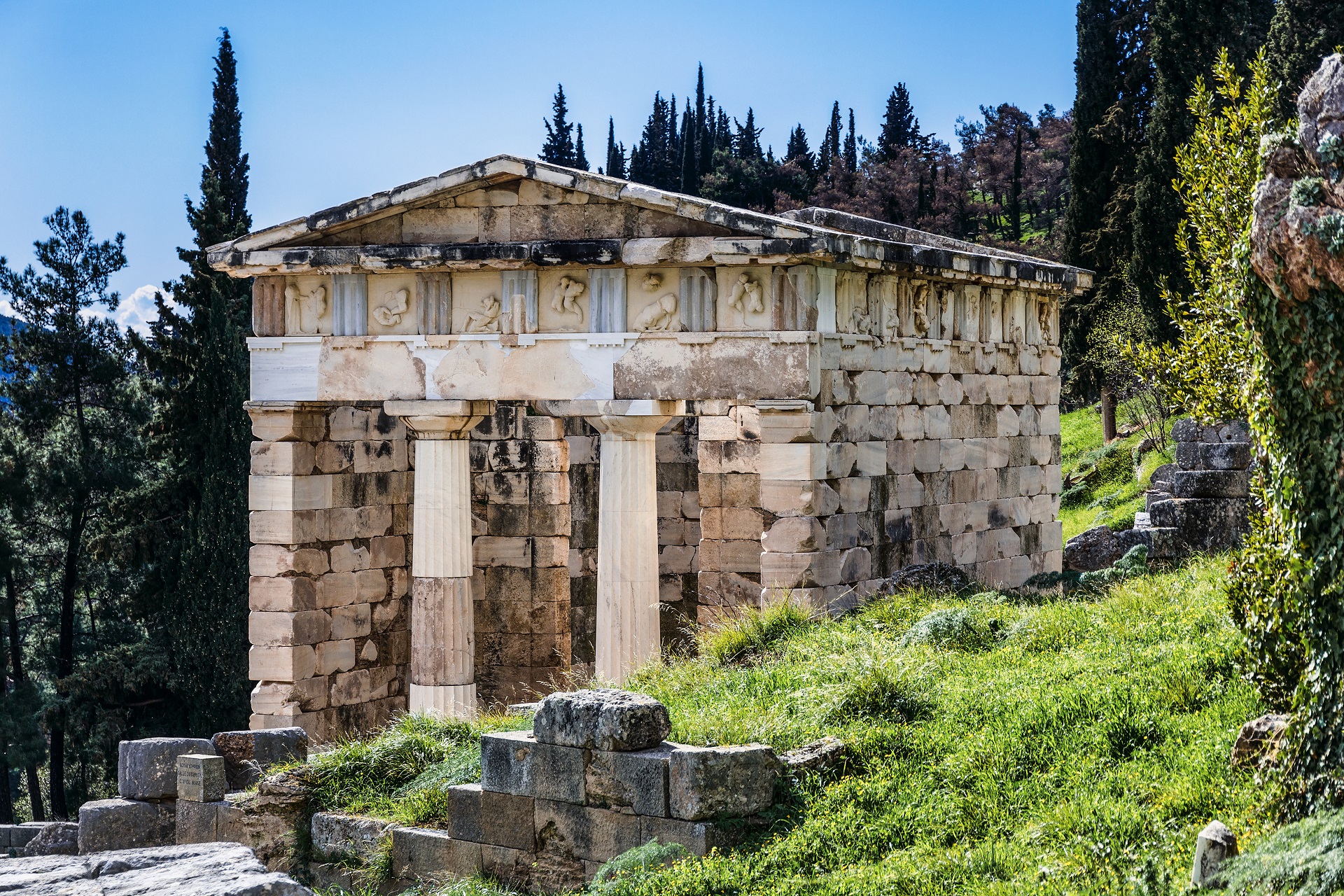
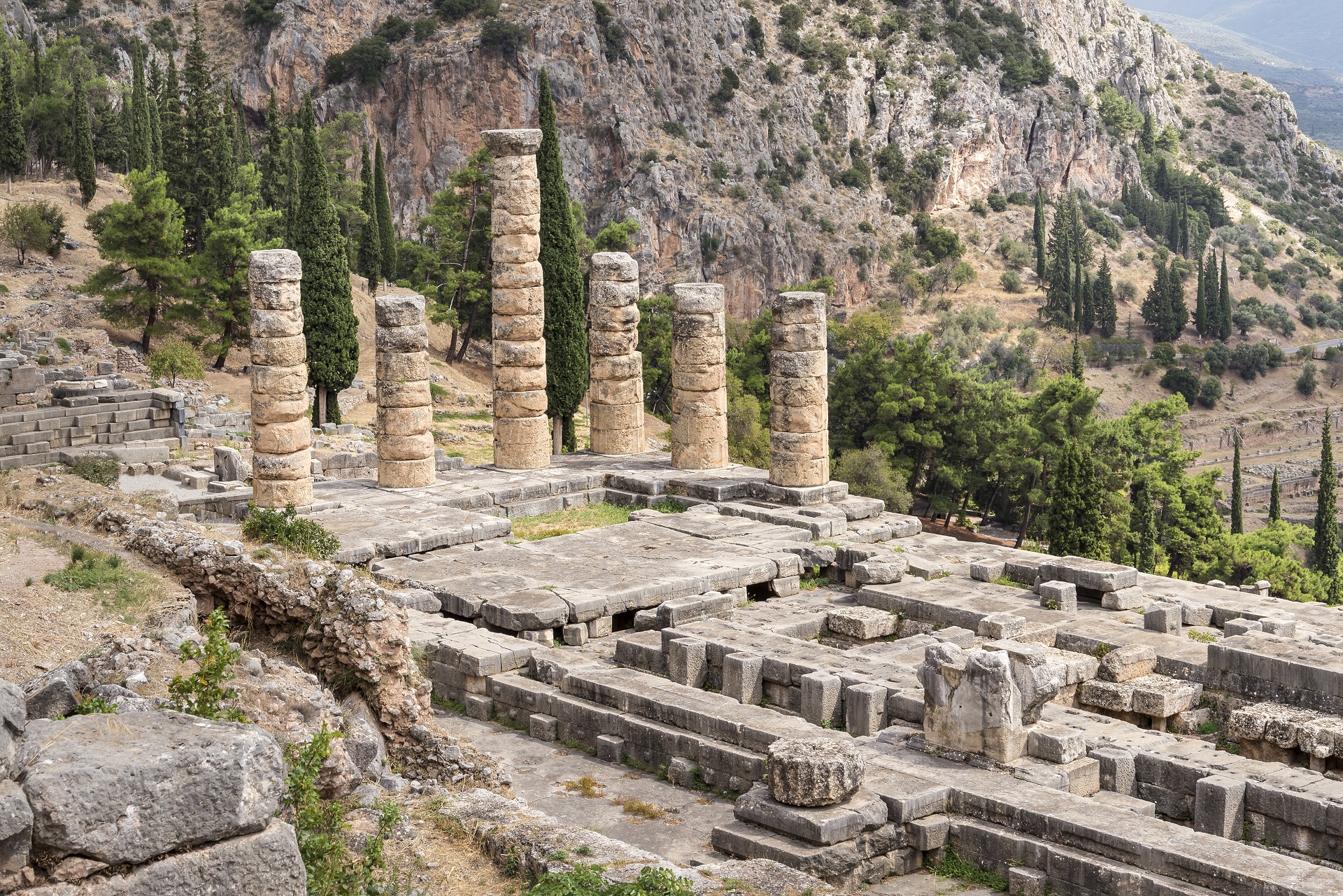
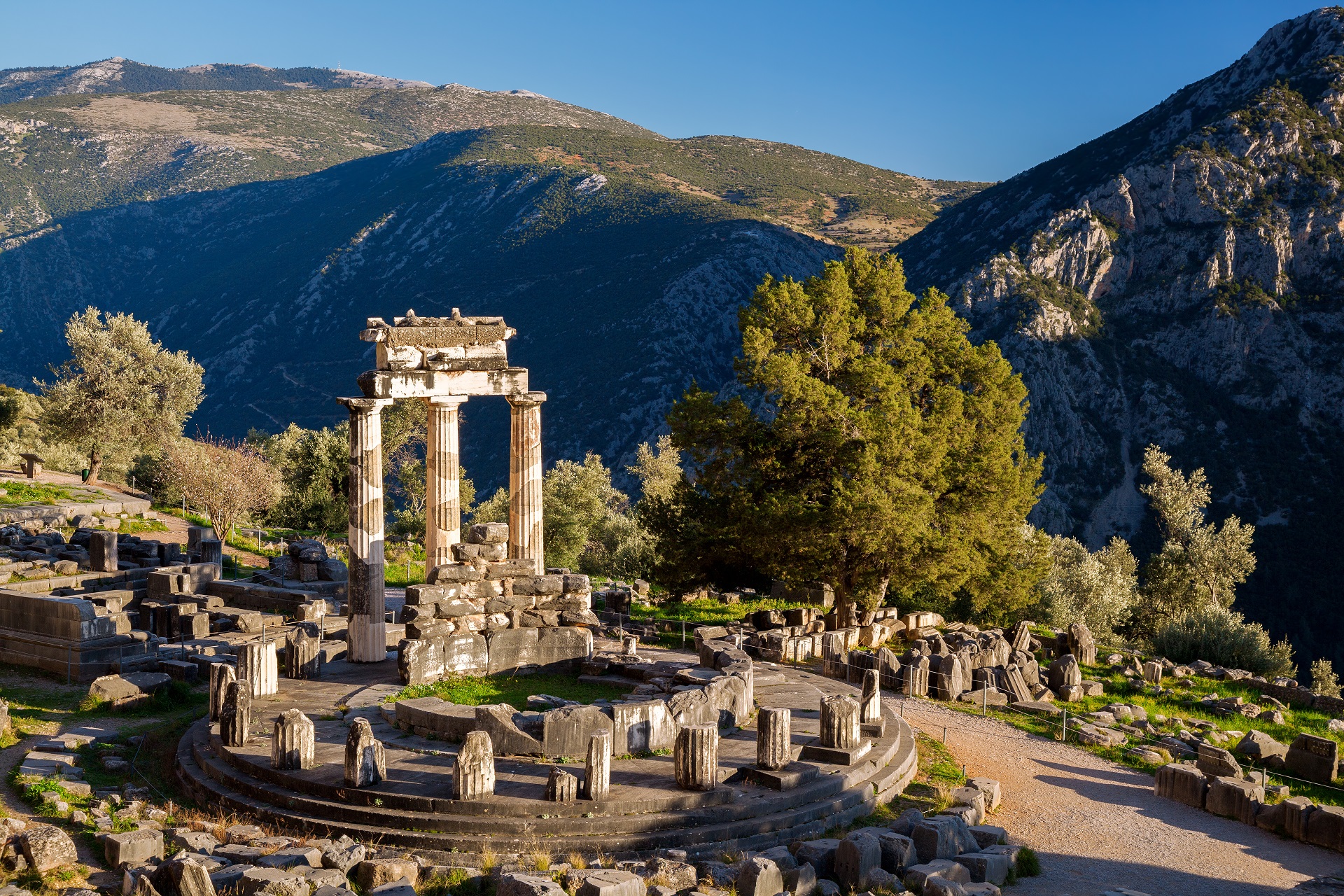
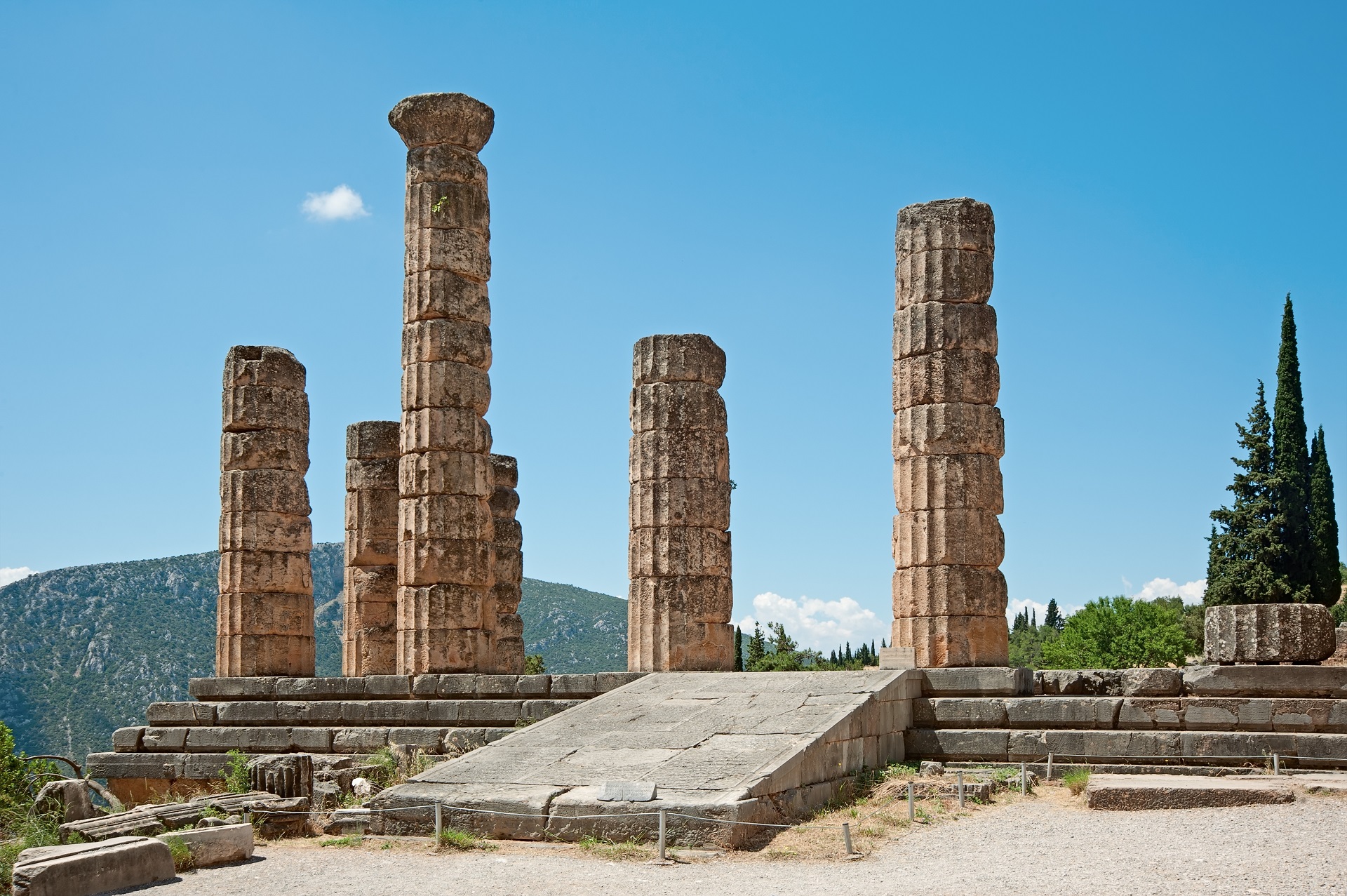
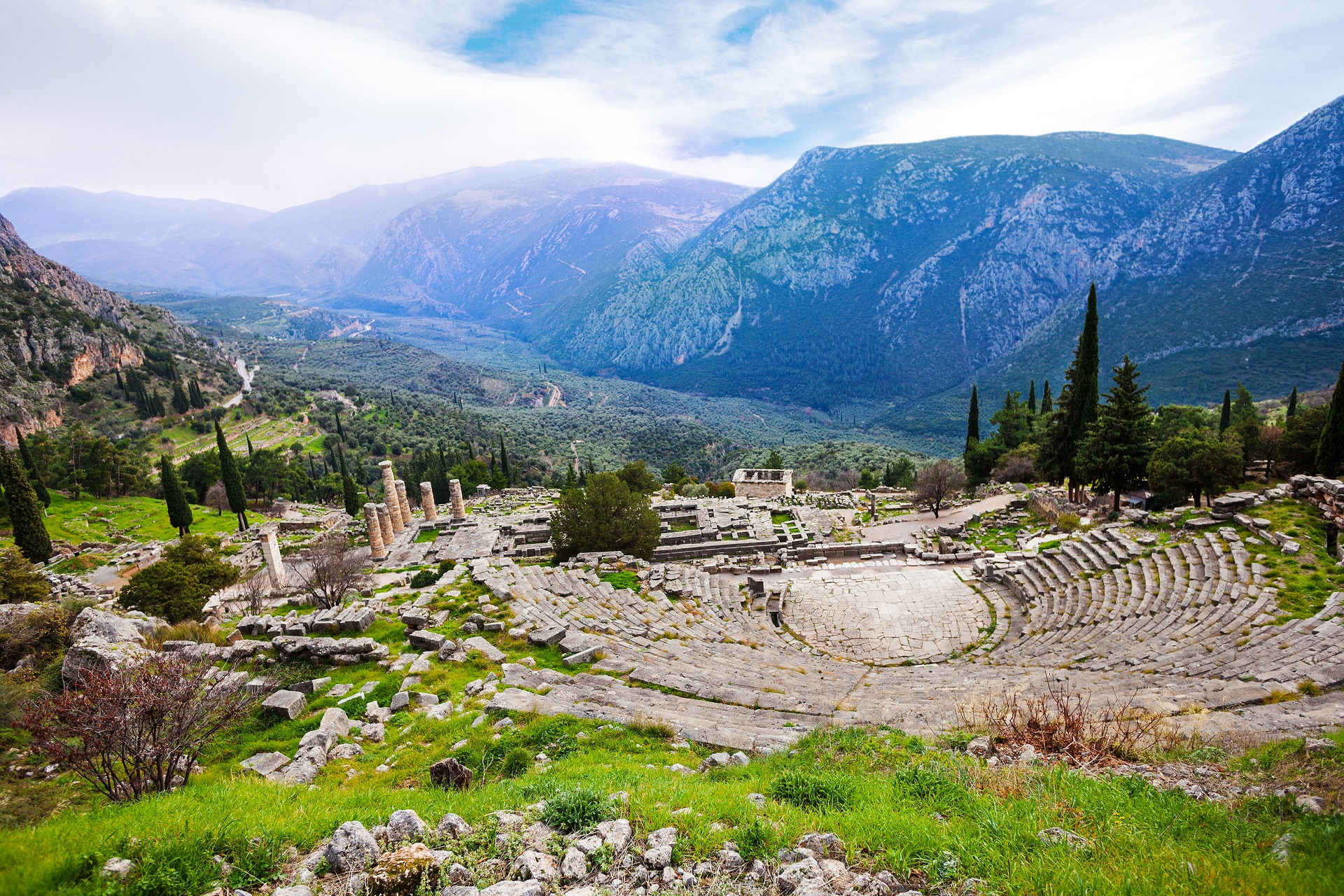
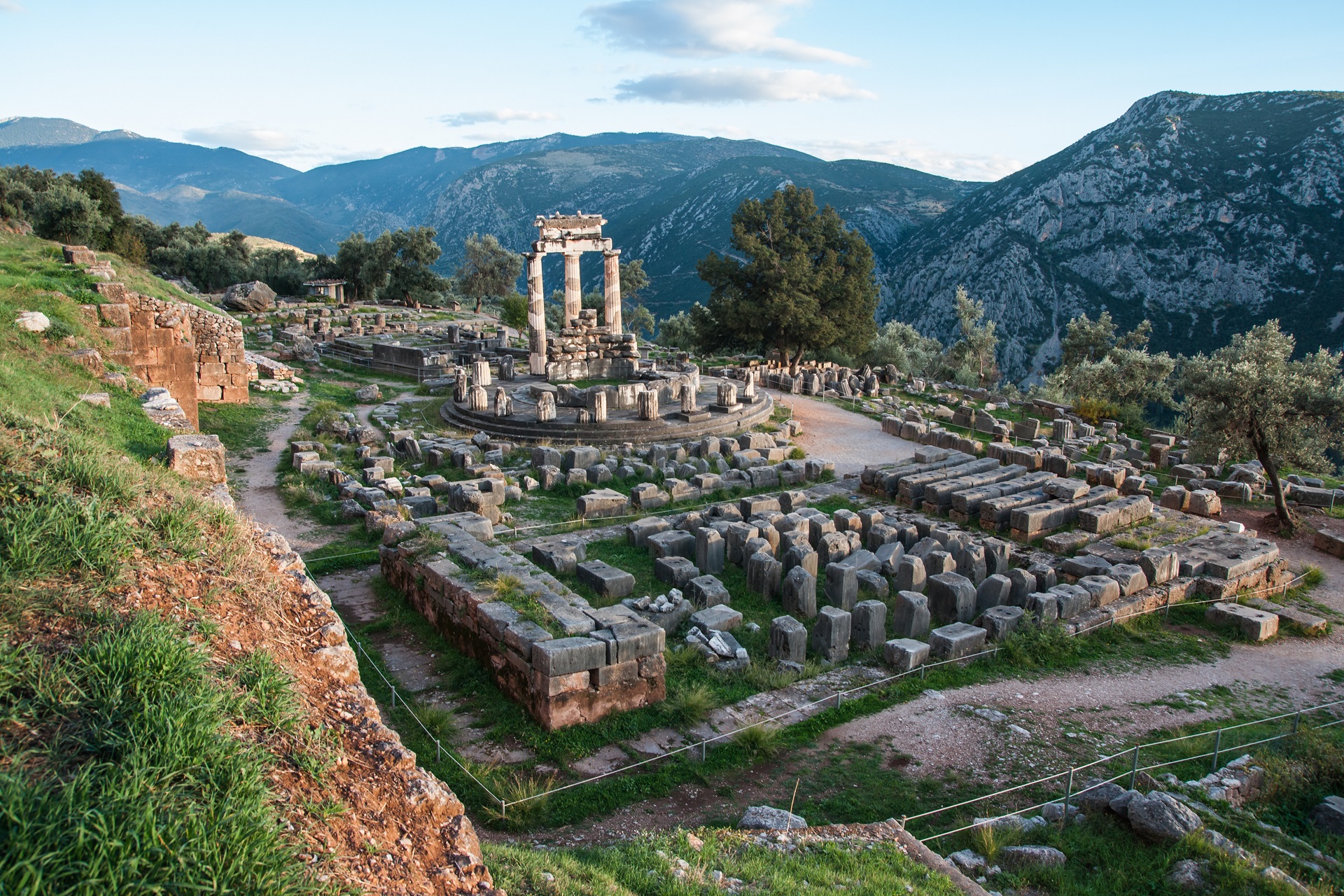
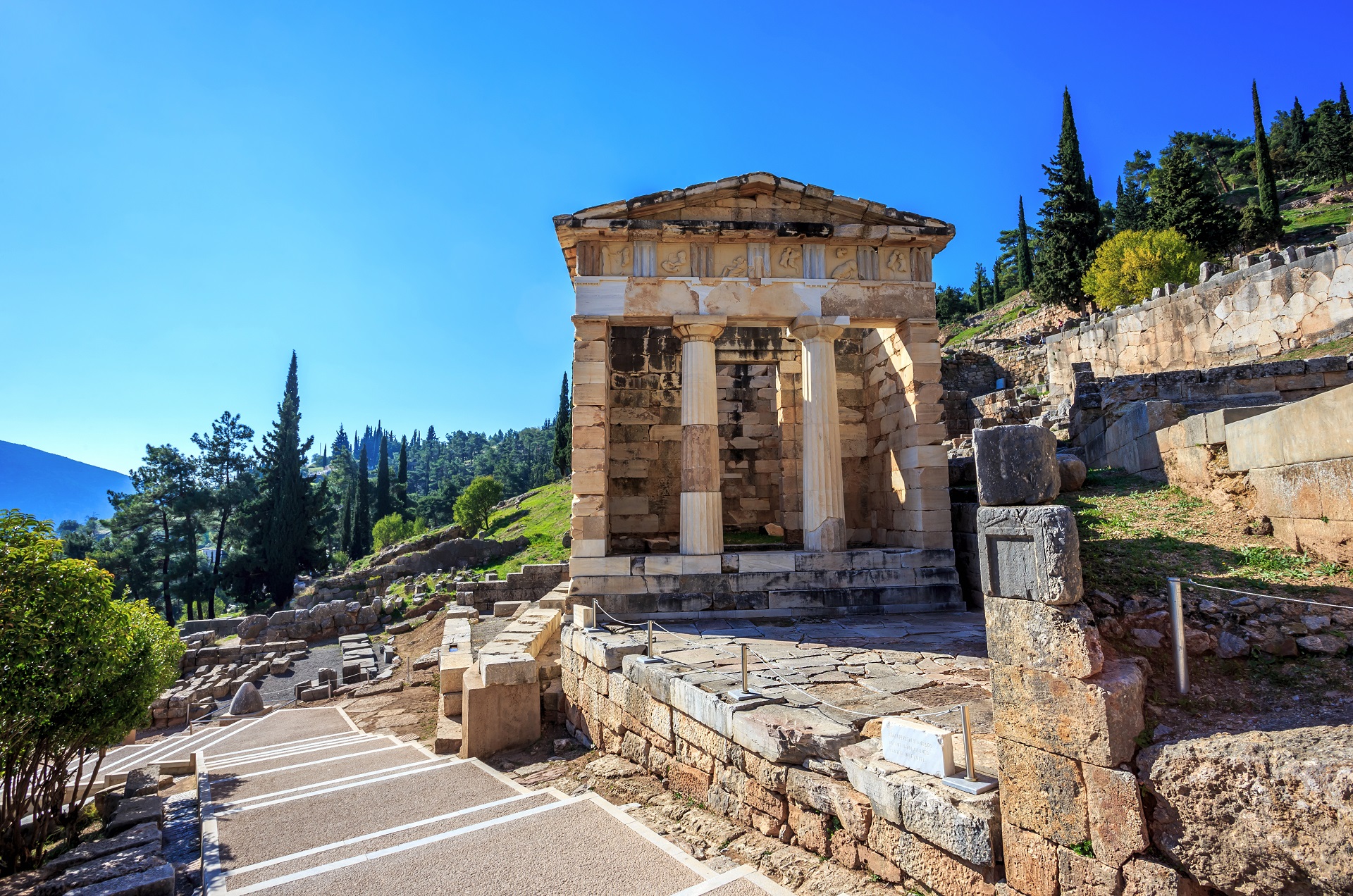
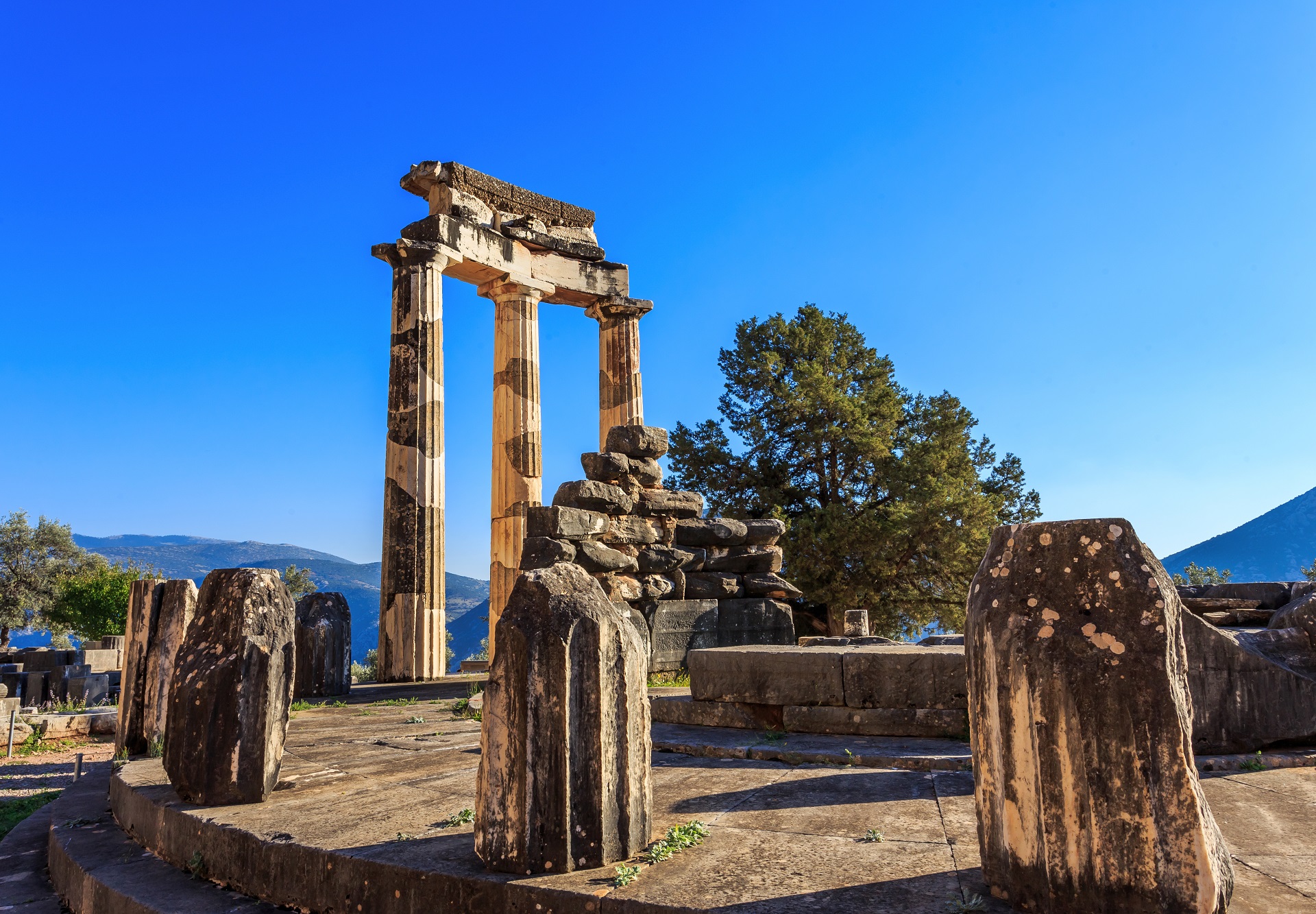
The archaeological site of Delphi
The archaeological site of Delphi consists of two sanctuaries, one dedicated to Apollo and one to Athena as well as other buildings mostly intended for sports.
Visitors arriving from Athens first encountered Athena Pronaia’s sanctuary. Outside its walls spread the settlement of Delphi, while within the walls, was the famous Tholos, the symbol of Delphi today, and the remains of three temples dedicated to the goddess.
This sanctuary also includes the altars of Zeus Polieus, Athena Ergane, Athena Zosteria, Eileithyia and Hygeia, the remains of two buildings dedicated to the cult of the local heroes Phylakos and Autonos, who routed the Persians from Delphi and two treasuries with marble roofs, one Doric and the other Aeolian. The Aeolian Treasury of Massalia preserves a characteristic palm-leaf capital.
The sanctuary also included a statue of Emperor Hadrian, a memorial to the routing of the Persians, and a building known as the “house of the priests.”
Northwest of the sanctuary of Athena Pronaia lays the gymnasium. It was a place for exercise and learning, the palaestra and the baths. Further up the slope was the fabled Castalian spring, the sacred spring of Delphi, were travelers quenched their thirst after a long voyage and then purified themselves before consulting the oracle.
The central, most important part of the site was the Temple of Apollo, which was surrounded by the usual peribolos, an enclosure wall, with the main gate at its southeast corner. From here visitors entered the Sacred Way, which is the street that led to the temple of Apollo with its famous adyton, where Pythia delivered her oracles. With the Temple and the Sacred Way as its center, the sanctuary grew larger, spreading over artificial terraces supported by monumental walls, bordered by porticoes (of Attalus, of the Aetolians, of the Athenians) and accessed through corresponding gates in the enclosure wall.
Scattered among these buildings and along the Sacred Way were numerous votive monuments dedicated by Greek cities or wealthy individuals on the occasion of socio-political events, or just to express gratitude to God and his oracle. These monuments are representative of artistic achievement from the East to the coasts of the Mediterranean and indicate the wealth of their patrons. They vary from silver and bronze tripods (one of the oracle’s symbols) to complex groups of sculptures in bronze or marble.
Above the temple is the theater where the theatrical and musical contests of the Pythian Games were held. Even higher up the slope, beyond the sacred enclosure, lies the stadium where the athletic competitions took place.
Outside and around the two sanctuaries are the remains of the settlement and cemeteries of Delphi, which developed mainly in the Classical and Roman period.
The museum
The Archaeological Museum of Delphi exhibits the history of the Delphic sanctuary. Its rich collections are comprised primarily of architectural sculpture, statues and minor objects donated to the sanctuary. These reflect its religious, political and artistic activities from its early years in the eighth century BC to its decline in Late Antiquity.
A two-story building houses the museum in with a total surface area of 2270 square meters, with fourteen exhibition rooms, 558 square meters of storerooms and conservation laboratories for pottery, metal objects and mosaics. A new lobby, cafeteria and gift shop were created during the museum’s latest refurbishment.
Admission
Opens:
Daily 9.00 – 16.00 (Last admission 15.40)
Holidays
1 January: closed
25 March: closed
1 May: closed
Easter Sunday: Closed
25 December: closed
26 December: closed
Tickets
Full: €12, Reduced: €6
Special ticket package: Full: €12, Reduced: €6
Free admission days
6 March (in memory of Melina Mercouri)
18 April (International Monuments Day)
18 May (International Museums Day)
The last weekend of September annually (European Heritage Days)
28 October
Every first Sunday from November 1st to March 31st
Reduced admission for:
Escorting parents on educational visits by primary schools.
Greek citizens and citizens of other EU member countries who are over 65 years old, upon presentation of their ID card or passport for verification of their age and country of origin.
Students of University – Higher Education Institutes, Technological Educational Institutes or equivalent Schools of countries from outside the European Union, upon presentation of their student ID cards.
